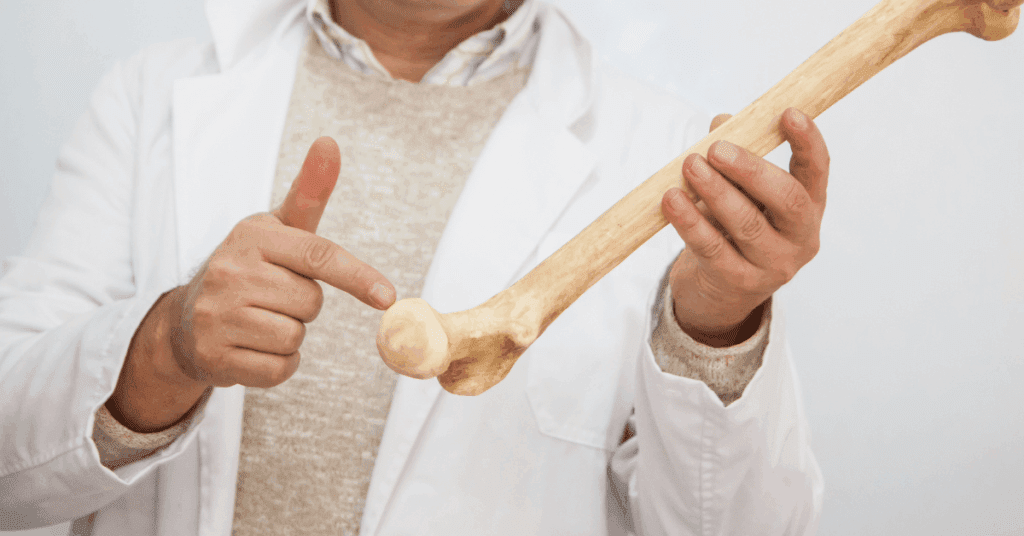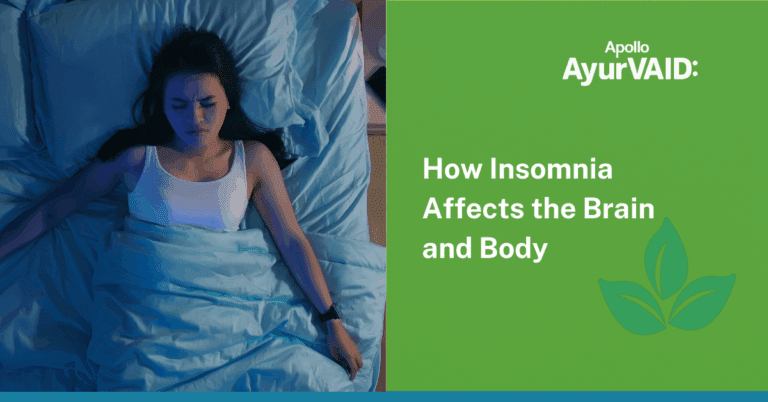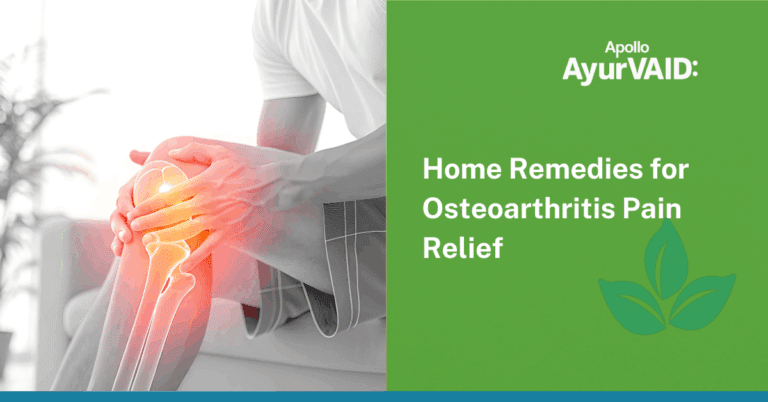Introduction
Have you ever experienced a slight ache in your knees when walking up stairs or noticed a faint crack in your joints at the end of a long day? Maybe your back stiffens after a prolonged sitting period, or you get tired while doing tasks that were once easy to accomplish. These subtle cues often indicate that your bones and joints are in need of assistance.
As World Osteoporosis Day (20th October) reminds us, bone health deserves conscious awareness long before fractures or severe pain appear. Many people assume bone weakness is an inevitable part of ageing or menopause — but it isn’t. Ayurveda beautifully reminds us that our bones (Asthi Dhatu) are living, responsive tissues that rebuild every day, shaped by how we eat, move, and rest.
Modern habits — long sitting hours, limited sunlight, erratic meals, and constant stress — quietly weaken bones over time. Ayurveda refers to this as “Asthi Kshaya”, characterised by joint pain, creaking sounds, lethargy, brittle nails, or hair loss— all early demands for nourishment and equilibrium.
The encouraging news is that bones are extremely strong. With the proper daily rhythm — healthy food, conscious movement, restful sleep, and peaceful emotions — you can regain bone strength naturally at any age.
This blog shares ten gentle, evidence-based Ayurveda ways to learn how to increase bone strength, how to make bones stronger, and how to strengthen bones and joints naturally — helping you live healthier and stronger every day.
How to increase bone strength?

How to make bones stronger?
Some of the most powerful natural foods rich in bone-strengthening ingredients include Shimbi Dhanya (pulses), such as Mudga (green gram), Masha (black gram), soybean, Rajma, and Horse gram. They are all excellent sources of calcium, phosphorus, magnesium, and protein, which are needed for bone density and structure.
Ayurveda also recommends cooking these pulses using techniques such as soaking, sprouting, and spicing with cumin, asafoetida, and others that enhance the bioavailability of calcium and other nutrients by preventing antinutrients such as phytates and tannins. Moreover, the use of Tila (sesame seeds) or ghee (clarified butter) can also increase bone nutrition.
A diet full of such natural supplies, complemented by adequate exposures to sunlight to allow Vitamin D synthesis, combined with normal body motion and good sleep, avoids conditions that lead to bone density loss, such asosteopenia (early bone thinning) or osteoporosis (advanced bone loss leading to fragile, fracture-prone bones).
Here are 10 important tips for having healthy bones.
- Eat calcium-rich, whole foods every day. Include milk (or calcium-fortified plant milks), sesame, ragi, and small oily fish where appropriate— these traditional and modern sources provide the mineral substrate bones need to repair and maintain themselves.
- Get sensible sun exposure and support vitamin D through diet. Short, regular morning sun (early hours) plus vitamin D–rich foods and testing-guided supplements help the gut assimilate calcium and support bone remodelling.
- Prioritise easily digestible protein at each meal. Soft, well-cooked pulses (mung), dairy, fish or legumes replenish the collagen matrix of bones and support healing without overburdening Agni.
- Choose grounding, weight-bearing and strengthening exercises. Daily brisk walking with two short weekly strength sessions sends the mechanical signals bones need while keeping joints mobile — avoid sudden, high-impact strain in delicate people.
- Fill your plate with cooked vegetables and fruits for bone quality. Warm, cooked greens, stewed fruits and potassium-rich vegetables supply micronutrients (K, Mg, vit C) that protect bone microarchitecture and collagen.
- Use plant oestrogens thoughtfully around menopause. Whole-food sources such as cooked soy or fenugreek can be considered part of an individualised plan to slow menopausal bone loss, but dose and form matter— discuss with your clinician.
- Avoid bone-hostile habits: tobacco, excessive alcohol, and chronic undernutrition. Smoking, heavy drinking and repeated dieting accelerate Asthi (bone) depletion and slow healing, so practical harm reduction and nourishment are essential.
- Follow Ayurveda’s Pathya: warm, unctuous, nourishing foods; avoid Apathya. Daily choices, such as warm milk with ghee, sesame preparations, kichadi, and soups, support Asthi and pacify Vāta, while cold, dry, astringent foods and suppression of natural urges worsen joint degeneration.
- When needed, add supervised Ayurveda therapies. Treatments like Matra or Majja Vasti, local lepa, and Snehana–Swedana can help nourish tissues and relieve symptoms when done by a trained practitioner.
- Be aware of the risks that gut health, inflammation, and medication pose to bone health. Support digestion (warm water, ginger, cumin where appropriate), manage chronic inflammation with diet and lifestyle, and review long-term medicines (eg, glucocorticoids) with your prescriber to minimise bone harm.
The following are supportive dietary and lifestyle recommendations from classical Pathya–Apathya guidance tailored for joint health, especially in conditions like sandhigata vata (osteoarthritis). Use them alongside your doctor’s and therapist’s advice.
Pathya—Foods to be consumed
- Godhuma (Wheat) — warm chapati / soft porridge
- Masha / Mudga (Well-cooked Black/Green gram) — mung dal kichadi
- Raktashali / Shashtika Shali (Red rice / Shashtika rice) — soft-cooked rice
- Draksha (Grapes) — stewed or fresh in small amounts
- Badara (Ber / dry jujube) — as tolerated
- Amra (Mango) — ripe, cooked or stewed forms.
- Gau Dugdha / Aja Dugdha (Cow/goat milk) is served warm with a teaspoon of ghee, if tolerated
- Ghṛta (Ghee) — small amounts in cooking to improve digestion and unctuousness
- Shigru / Moringa (Drumstick/moringa leaves) — cooked into soups or dal
- Uṣhṇa Jala (Warm water) — sip warm water throughout the day
Apathya — Foods & behaviours to avoid
- Yava (Barley) — if it causes heaviness or is individually aggravating
- Chaṇaka (Black chana / Bengal gram — hard, dry forms)
- Madhu (Honey) — avoid when prescribed as an Apathya in specific contexts
- Shuṣka Mamsa (Dry / preserved meats)
- Sheeta Jala / Iced water (Cold/very cold drinks)
- Ati-madyapana (Excess alcohol)
- Katu/Tikta/Kashaya Rasa in excess (Excessively pungent, bitter or astringent foods).
- Suppression of natural urges (e.g., withholding stools/urine).
Simple daily actions
- Warmth & oil: Gentle self-massage (Abhyanga) with warm sesame oil for 5–10 min before showering, 3–4×/week.
- Sun & vitamin D: Short morning sun (10–20 minutes) and a warm breakfast afterwards.
- Protein & meals: Soft mung-dal kichadi or paneer/eggs/fish (where acceptable) at meals to support tissue.
- Movement: 20–30 minutes of brisk walking most days + 2 short strength/balance sessions weekly.
Bone can be strengthened naturally with these steps. Start with your commitment toward stronger bones, more flexible joints, and sustained structural vitality through these natural steps backed by Ayurveda wisdom.






